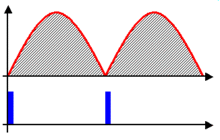I've been interested in dimmer technologies these days, and spent some time in reading about this topic on the web.
According to what I understand, the problem with usual dimmers is that with inductive or capacitive loads, the current is not in phase with the voltage, which prevents the dimmer from working. So, they invented various technologies like phase adaptive dimmers, or pulse width modulation etc.
I just want to understand: if a dimmer were able to deliver a pure sine voltage of settable amplitude (and of the same frequency as the main), without regard to the current flowing through the device, would the problem be solved ? would led lamps, transformers etc. work well under this "dimming", or is there something else?
Electrical – dimmers – is the problem solved with pure sine wave
acdimmerpower supply
Related Topic
- Electronic – Measure AC Sine Wave amplitude with ADC
- Electronic – Full-wave rectified sine wave representation
- Electronic – To what extent are “pure sine wave” power supplies marketing spin
- Controlling a 1000W radiant heating element with dimmers
- Touch dimmer with low voltage transformers, needs incandescent to work? Updated!
- Electronic – Synchronizing a diesel generator with a pure sine wave inverter


Best Answer
Incandescent filament lamps would dim well on the waveform you propose, but then they work well with conventional TRIAC phase shift dimmers.
As flourescent lights need a minimum voltage, and both compact flourescents and LEDs use electronics which rectifies the peak voltage provided, a variable amplitude sine wave would fail to dim all of these types, but in a slightly different way that the phase shift dimmer fails to dim them.
Ballast flourescent lights would dim as the voltage reduced a little, then probably flicker and fail to light at all as the tube temperature dropped at further reduced voltage. For high frequency flourescent, CCFL and LED, it all depends on how the control circuitry has been designed. 'Passive' LED with the cheap'n'cheerful capacitive input would dim quite a long way, as the current dropped with voltage. LEDs with a constant current source would keep going at constant brightness, drawing more current from the supply as the voltage dropped, until they went out at a low enough voltage.
Note that dimmable LEDs are available. They rectify the peak voltage, take their control input as the width of the pulse from the TRIAC dimmer, and program their current output accordingly. Some clever types even change their colour temperature according to the dimmer setting, hard white when full on, and warm white when dimmed.
Dimmers. The problem is solved when the type of dimmer and the type of lamp are matched.